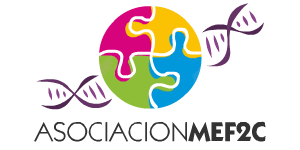What is 5Q14.3 MICRODELETION-MEF2C?
5q14.3 DELETION AND MEF2C GENE
A 5q14.3 deletion is a rare genetic condition in which a piece is missing from one of the body’s 46 chromosomes. The missing piece can be tiny or much larger but includes important genetic material. This material usually includes all or part of one or more genes that are important for normal development. Sometimes the missing piece does not include part of a gene but consists of material close to one.
Chromosomes are the structures in each of the body’s cells that carry the genetic information that tells the body how to develop and function. They come in pairs, one from each parent, and each chromosome has a short arm (p) and a long one (q).
Research into 5q14.3 deletions is very active. The belief today is that a deletion involving the MEF2C gene in the q14.3 band of chromosome 5 causes the major features of the 5q14.3 deletion syndrome. The syndrome can also be caused by a point mutation involving the MEF2C gene. A point mutation occurs when a single base is replaced in the structure of DNA. Bases are the chemicals in DNA that are linked in pairs to form the ends of the ‘rungs’ of its ladder-like structure.
Thus, altough 5q14.3 deletion may affect a lot of genes, the MEF2C gene is found between base pairs 88,051,922 and 88,214,780 and it’s currently believed that loss or point mutation of this gene causes the major features of the emerging 5q14.3 deletion syndrome.
MEF2C plays a very important role in the development and maintaneance of multiple organs, including brain where pne of its functions is that of creating brain cells.
MOST LIKELY FEATURES
- Early and severe hypotonia [low muscle tone]
- Marked developmental delay
- Epilepsy
- Marked learning disability and need for special support
- Marked delay in learning to sit and move
- Marked language delay. Most children do not speak but communicate in other ways
- Delay in making eye contact
- Stereotypic or unusual movements
- Some unusual facial features(high and wide forehead, pronounced eyebrows, short and / or prominent sub-nasal wrinkle, outlines of the mouth curved downwards, small chin and structural abnormalities in the ears). They are very subtle characteristics, difficult to recognize by non-specialists in this subject.
- Brain abnormalities on magnetic resonance imaging.
Most of these features lead to a diagnosis within the Autism Spectrum Disorders. That is why haploinsufficiency MEF2C is related to autism.
STATISTICS
5q14.3 microdeletion syndrome is a rare disease that has recently been characterized; therefore it is difficult to identify how often IToccurs. This is because there is a wide range of features, and many people with milder aspects can not be recognized. Most deletion syndromes affect people of all ethnic groups and both genders equally. Currently, this deletion has been reported in fewer than 50 people. It is thought that genetic variations of MEF2C gene including deletions, explain up to 1% of existing intellectual disabilities.
You can find more detailed information about this syndrome in the following document published by UNIQUE (Rare Chromosome Disorder Support Group), a nonprofit organization dedicated to promoting awareness of rare chromosome disorders:


